Musculoskeletal Injury Prevention
Musculoskeletal Disorders continues to be the leading cause of WCB-accepted lost-time claims in long term care and seniors’ supportive living/lodges. Since 2009 CCSA has supported its members through a variety of programs and services designed to provide employers and workers with accurate information to improve their awareness of MSDs, the factors within the organization that create the environment for MSDs and build knowledge and skills to reduce MSDs.
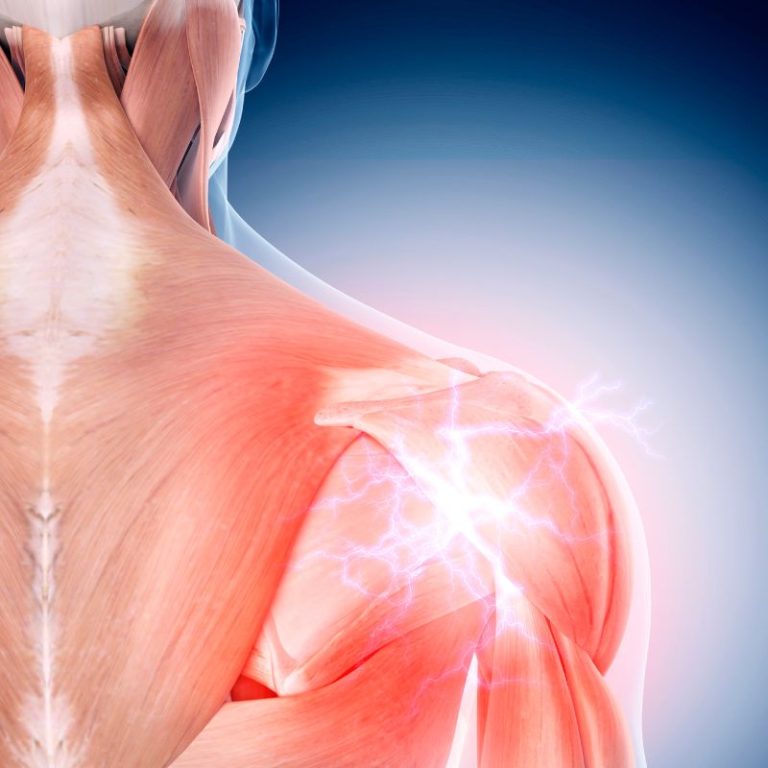
- Support Workers Who Report MSD
- Organizational Commitment to Support Staff in MIP
- CCSA’s MIP Courses: MMH and SRH
- PoseChecker A.I. Tool
- OHS Prevention Initiative
- Ergonomics Team Activities
- Observation and Tracking Tool Templates
- Body Mechanics Videos: MMH and SRH
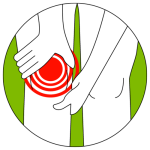
!!! MSDs are one of the most common causes for both lost-time and disabling injury claims in Alberta
!!! MSDs are the most common type of injury in continuing care and can be caused by resident handling and manual materials handling activities
The Alberta OHS Code defines an Musculoskeletal Disorder as an injury to “the muscles, tendons, ligaments, joints, nerves, blood vessels or related soft tissues that are caused or aggravated by work, including overexertion injuries and overuse injuries.”
Some of the tasks we perform at work – such as lifting, reaching, and repeating the same movements – can strain our bodies. In some situations, these tasks can result in an injury to the muscles, tendons, ligaments, nerves, blood vessels, and joints of the neck, shoulders, arms, wrists, legs, and back. They can range in severity from minimal discomfort and a short recovery to a life-long injury that restricts a worker’s ability to do the work and home activities they once could.
The incidence of MSDs in a particular work place may be much higher or lower than the average depending on factors such as the effectiveness of the health and safety program and the type of work done in that work place. Implementing good MSIs prevention strategies will help to reduce the number of MSDs and save employers money.
Recognizing Early Signs and Symptoms of Musculoskeletal Injuries
To maintain a healthy work environment, it’s important for managers, supervisors, health & safety committee and frontline workers to recognize the early signs and symptoms of musculoskeletal injury. These signs can include swelling, redness, or difficulty when moving a particular body part, while symptoms can range from numbness and tingling to outright pain.
MSD can occur suddenly, as a result of a single incident causing injury, or gradually over time. Regardless of how it happens, an MSD can seriously impair your ability to carry out tasks both at work and in your personal life. If left untreated, signs or symptoms of MSD can worsen over time and lead to long-term effects, such as muscle strains to the neck, back, shoulder or legs, tendonitis, or even carpal tunnel syndrome.
Be aware of these signs and symptoms to avoid long-term damage and ensure a healthy, productive workplace.
Hazards that May Result in Musculoskeletal Disorders
A hazard, as defined in the Alberta Occupational Health & Safety Act, is “a situation, condition or thing that may be dangerous to the health and safety of workers.” A hazard has the potential to cause an injury, illness or loss. Some people think of a hazard as “an incident waiting to happen”. Potential hazards are those that are foreseeable and reasonably likely to occur.
Hazards in continuing care that may result in MSI include:
- FORCE
- AWKWARD POSTURE
- REPETITION
- LONG DURATION
SITUATIONS

Circumstances that exist in the workplace
Examples include:
- Lack of appropriate equipment
- Working short staffed
- Responding to emergencies
- Heavy furniture that cannot be moved easily
CONDITIONS
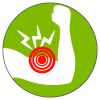
State of the workplace environment
Examples include:
- Clutter
- Heavy residents
- Poor lighting
- Small work area
- Residents with high needs
- Wet floors
- Icy sidewalks
- Poor lighting
- Lack of space
THINGS
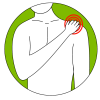
An object in the workplace
Examples include:
- Improper tools
- Improper mechanical lifts & slings
- Improper workstations
Report Signs and Symptoms of Musculoskeletal Disorders
If you are experiencing signs and symptoms of MSD, inform your supervisor and seek medical attention. Treatment can vary according to the type of injury. Treatment can include: application of cold or heat, mediation, physical therapy or surgery. An injury can be treated more effectively if it is discovered early. Do not ignore early signs and symptoms of MSD. You may need treatment or need to take steps to prevent the injury from worsening.
One of the keys to managing MSDs is to encourage a system of early reporting. It is important to report early signs and symptoms because:
- Continuing to work with an injured body part can affect other parts of the body and compound the situation.
- If left untreated, symptoms can become chronic and can lead to a disability.
- Early treatment of an injury can prevent lost time from the work place.
- It may help keep a co-worker injury free.
It is especially important to report signs and/or symptoms if the:
- Pain is persistent, severe or worsening.
- Pain radiates.
- Symptoms keep you from sleeping at night.
If a worker reports to their employer that they believe they have symptoms of an MSD, the employer is required to review the activities of that worker and also any other workers doing similar tasks to identify if there are any work related causes. If it is found that there are work-related causes the employer must take corrective measures to avoid further injuries.
Support Workers Who Report Musculoskeletal Disorders
- Listen and Recommend Medical Assistance
As an employer or supervisor, it’s crucial to prioritize the wellbeing of your workers. Musculoskeletal Disorder (MSD) pain canpain may present as swelling, redness of a body area, reduced range of motion, tingling, numbness, burning sensation, or tenderness to the touch. Reporting pain can often indicate that a worker has been exposed to MSD hazards, making it vital to take such reports seriously. Make it a point to listen to your workers’ concerns and address them in a timely manner.
- Investigate and Document
It is essential to perform a thorough investigation of a worker’s job for any potential hazards that may have caused their discomfort, as well as for other employees performing the same tasks. If multiple workers report similar symptoms, it is possible that a MSD hazard is present. However, this does not mean that a single worker’s complaint should be dismissed as irrelevant
- Report to WCB
It is essential to perform a thorough investigation of a worker’s job for any potential hazards that may have caused their discomfort, as well as for other employees performing the same tasks. If multiple workers report similar symptoms, it is possible that a MSD hazard is present. However, this does not mean that a single worker’s complaint should be dismissed as irrelevant
Musculoskeletal Disorders Prevention
Did you know that Musculoskeletal Disorders are currently the most frequently recorded injury type for caregivers in Alberta and account for more than 50% of time-loss injuries? That is why integrating effective Musculoskeletal Injury Prevention training into your health and safety programs is so important.
Employers are responsible for identifying hazards, implementing control measures to eliminate or reduce the hazards, and train workers to use the control measures provided and workers are responsible for reporting hazards they identify and to use the control measures provided by the employer.
When performing any resident or manual handling task always follow the S.A.F.E. Principles: Scan. Adjust. Follow-thru. Evaluate.
Organizational Commitment to Support Staff in MIP
Organizational commitment to support staff in Musculoskeletal Injury Prevention training is imperative. This commitment involves integrating comprehensive training programs designed to educate staff on best practices for preventing musculoskeletal injuries. These programs will include:
Engaging sessions where employees learn about proper ergonomics, safe lifting techniques, and posture correction to minimize strain and injury.
Regular updates and refresher courses to keep staff informed about the latest safety techniques and industry standards.
Easy access to educational materials, instructional videos, and expert consultations to reinforce learning and address any queries:
- Stable Internet Connection
- 2 devices – laptop, tablet, smartphone, smart TV (one to watch the presentation and one to allow observation and video capabilities for the lifting and handling techniques to assess competency)
- 2 volunteers for Safe Resident Handling (SRH) competency (if you are attending on your own) 1 to act as a patient and 1 to assist with lifting activities and/or videoing.
- Electric bed, slider sheets, transfer belt, wheelchair and lift (if used in your community) – SRH Competency
- Boxes, shelves, cart – Manual Materials Handling (MMH) Competency.
- COMBO (SRH & MMH) – electric bed, slider sheets, transfer belt, wheelchair and lift (if used in your community), boxes, shelves, cart, or dolly.
By prioritizing musculoskeletal injury prevention, organizations not only protect their staff but also enhance overall productivity, reduce absenteeism, and foster a culture of safety and well-being. This proactive approach underscores the organization’s dedication to creating a supportive and health-conscious workplace.
Musculoskeletal Injury Prevention Courses
Musculoskeletal Injury Prevention – Manual Materials Handling & Safe Resident Handling has been designed to ensure you become confident and comfortable in demonstrating to use the S.A.F.E. handling techniques required to reduce the risk of musculoskeletal injury disorders.
Note: Before attending CCSA’s Live Facilitated Musculoskeletal Injury Prevention Courses: Manual Materials Handling (MMH), Safe Resident Handling (SRH), or Combo (MMH & SRH), you must complete The Musculoskeletal Injury Prevention Orientation, a 60-min Free OnDemand Course. This animated and interactive online orientation course is designed to cover all of the theory behind safe lifting injury prevention.
Musculoskeletal Injury Prevention - Manual Materials Handling (MMH)
Musculoskeletal Injury Prevention - Safe Resident Handling (SRH)
MIP Combo - Manual Material Handling and Safe Resident Handling
Musculoskeletal Injury Prevention - Manual Materials Handling (MMH) Train the Trainer
Musculoskeletal Injury Prevention - Safe Resident Handling (SRH) Train the Trainer
Musculoskeletal Injury Prevention - Combo MMH & SRH Train the Trainer
PoseChecker A.I. Tool in MIP Courses
Did you know there exists an A.I. tool that can help you analyze how workers are performing tasks?
CCSA added the PoseChecker A.I. tool created by EWI Works as a value-added support service during our MIP workshops. PoseChecker: a vision-based motion capture software that uses AI-based computer vision algorithms to track body movements for ergonomic analysis.
This tool can help you to correct them and in the process, reduce or eliminate workplace Musculo-skeletal injuries. In addition, MIP instructors can use this software when they’re conducting their courses or monitoring co-workers in lifting objects, handling loads or moving residents.
For safety professionals, this tool became a real safety level-up in their organizations.
If you are the slightest bit curious, you should watch the video for more!
OHS Prevention Initiative
The OHS Prevention Initiative is a partnership between the Alberta government, employers, workers, health and safety associations, labour organizations, service providers (consultants, trainers and auditors) and WCB-Alberta. The OHS prevention initiative focuses on reducing common workplace injuries, protecting at-risk workers and identifying higher-risk work situations. The initiative also coordinates efforts between OHS system partners to achieve better health and safety outcomes. Alberta Government has launched resources to help prevent musculoskeletal disorders (MSD).
Start 10-15 Team Activities with Safety Segments
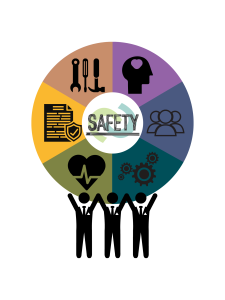
Start Group Activities with your team using the Safety Segments below to help prevent musculoskeletal injuries. The Safety Segments are designed to provide quick and effective sources for educators, leaders, occupational health and safety committee members, and their designated team members.
Ergonomics is the science of designing the environment, equipment, tools, tasks and job to the worker. The goal is to lessen muscle fatigue, increase productivity and reduce the number and severity of musculoskeletal injuries (MSIs).
- Push or Pull
- Shiftwork Fatigue
- Mental Health Focus: Workload Management
- Awkward Postures
- Alternate Resource: Working From Home Safely
When ergonomics in the workplace is discussed often the first thought is to those workers working at a desk doing computer work; however, for those who working the standing position ergonomics is just as important. These safety segments will help leaders promote a more ergonomic friendly environment for their standing workers in the supportive services where standing is the only option to complete their work.
- Psychological Health & Safety Factor: Balance
- Standing Ergonomics
- The Importance of Shoes
- Anti Fatigue Mats
- Injury Prevention for Standing
Observation and Tracking Tool Templates
These templates and resources aim to provide employers and employees with relevant information and tools on MSI prevention:
- Nursing Body Mechanics Observation Form docx.
- Sample Resident Transfer and Lifts Policy docx.
- Sample Manual Material Handling Policy docx.
- MMH Body Mechanics Observation Tracking Tool xlsx.
- Lift, Transfer and Body Mechanics Observation Tracking Tool xlsx.
- Manual Materials Handling Assessment Form docx.
Body Mechanics Videos: MSD/MSI Prevention (Safety Bytes)
Manual Materials Handling
- Team Lifting – Done Right (2:40)
- Repetitive Motion (1:11)
- Pushing and Pulling (1:56)
- The Golfer's Lift (1:31)
- Mopping (1:05)
- Overhead Lifting (1:30)
- Pushing And Pulling Carts (1:25)
- Vacuuming (0:57)
- Lifting Awkward or Uneven Loads (1:50)
- Overhead Lift and Lower (2:41)
- The Power Position with Woody (3:23)
- Using A.I. for Workplace MIP and Safety (5:24)
Safe Resident Handling
- How to Correctly Use a Slider Sheet (2:05)
- Assisting a Fallen Person to a Chair (1:51)
- How to Move a Supine Resident to a Sitting Position Safely (2:12)
- How to Boost a Resident Safely (1:25)
- How to Perform a Lateral Shift of a Resident Safely (2:00)
- Rolling or Turning a Resident Safely (1:43)
- Assisting a Fallen Resident Using Mechanical Lift (1:23)
- Placing and Removing a Sling | Wheelchair (1:35)
- Repositioning a Resident in a Wheelchair (1:02)
- Walking with a Resident (1:00)
- Securing a Transfer Belt on Your Resident (1:01)
- Supine to Sit Two Caregivers (0:55)
- Performing a 2 Person Turn (3:02)
- Boosting up a Resident in Bed (1:59)
- Resident Transfer by One Caregiver (1:39)
- Moving Resident to Wheelchair Using a Lift (0:49)

